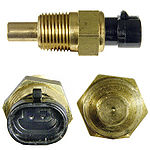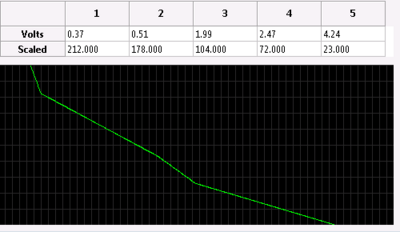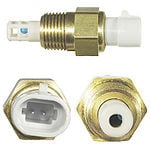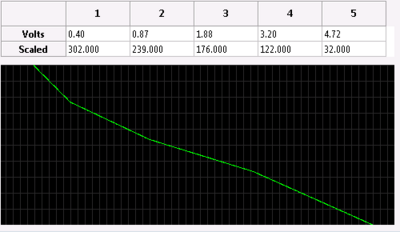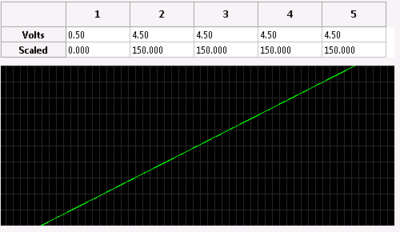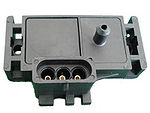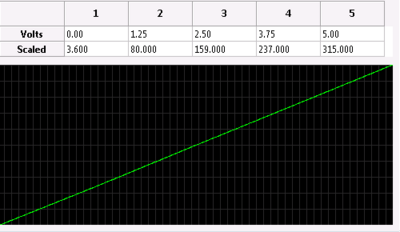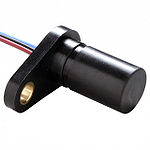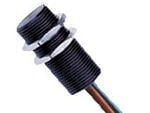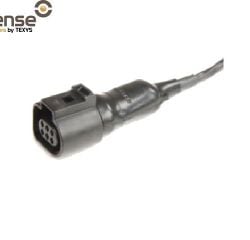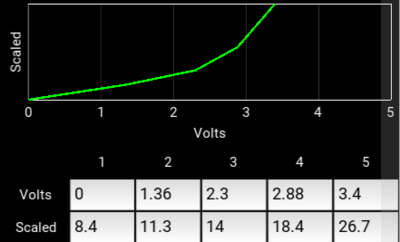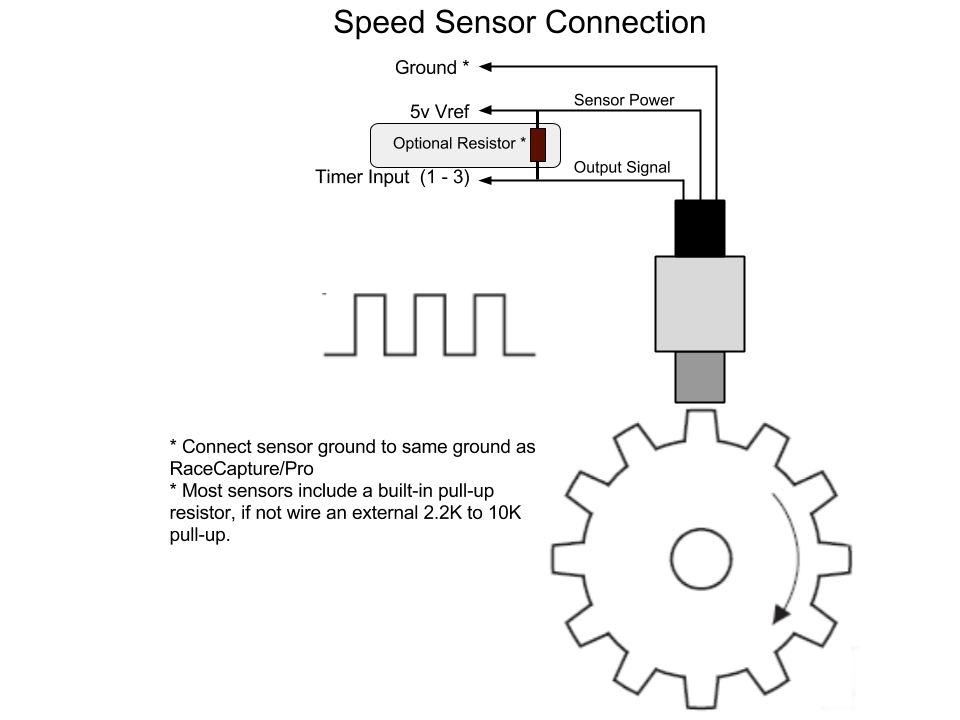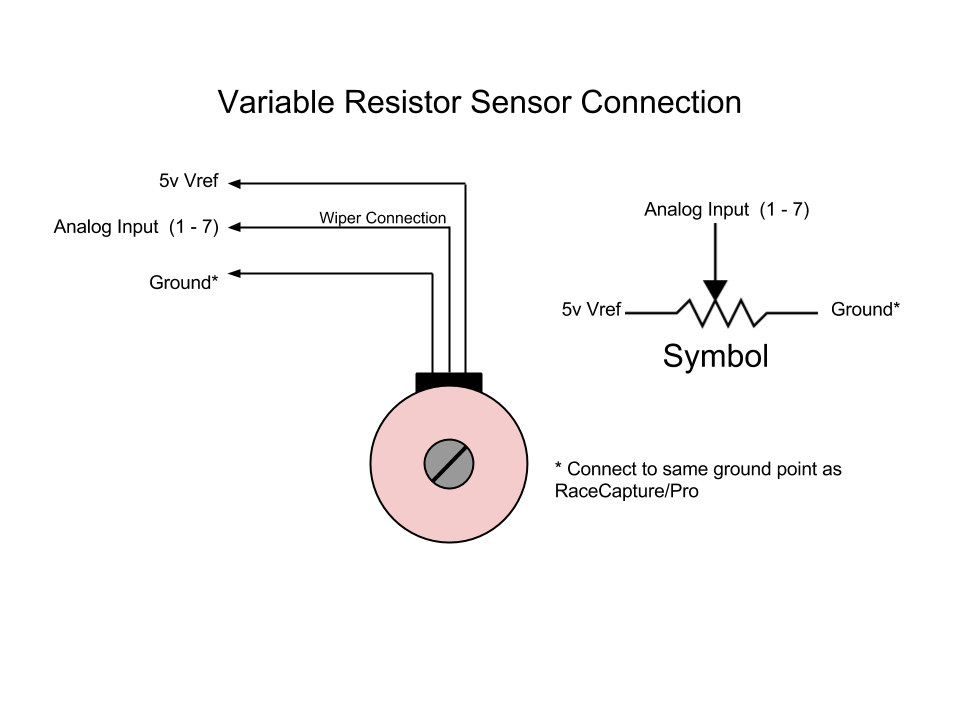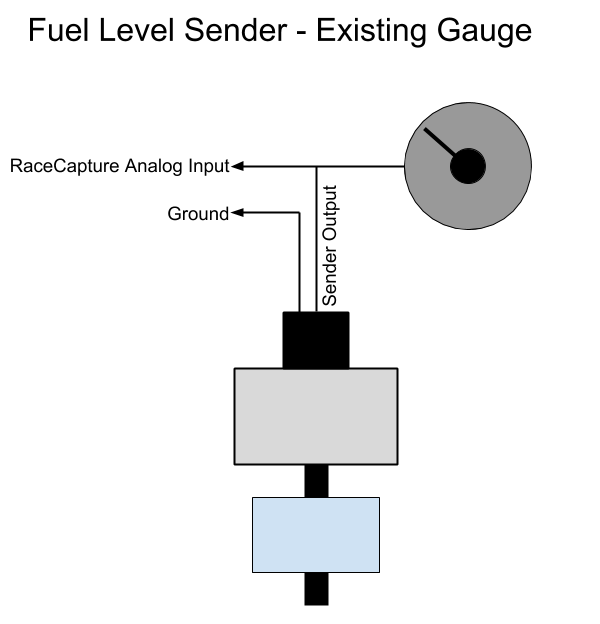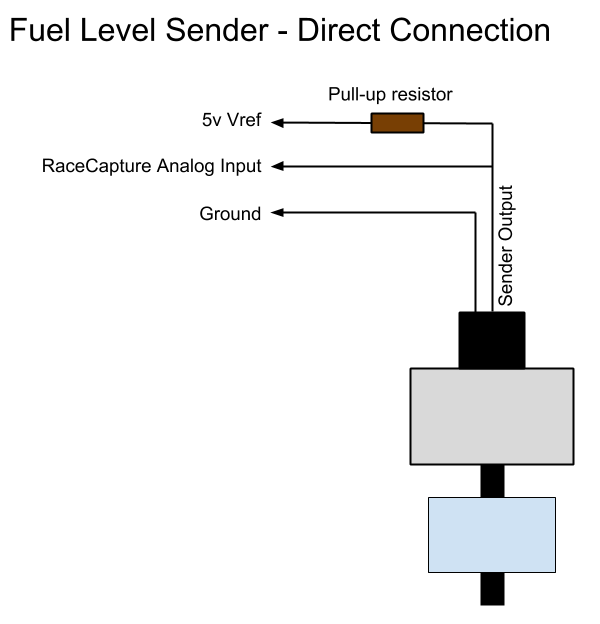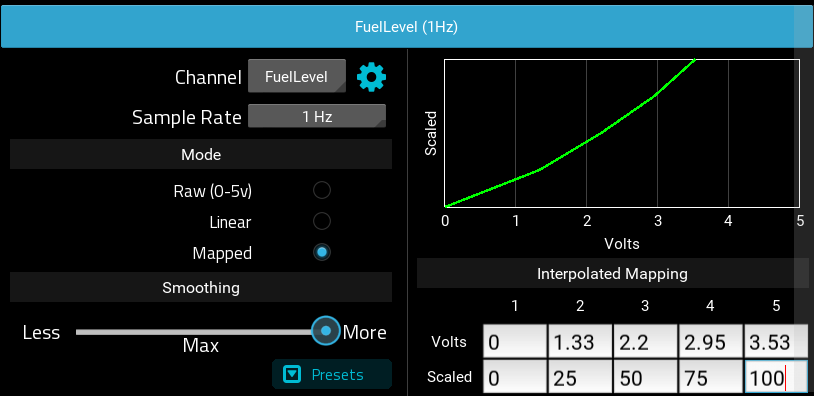RaceCapturePro Sensors: Difference between revisions
| Line 524: | Line 524: | ||
** Connect the ground of the fuel level sender to ground (ideally the same ground point used by RaceCapture) | ** Connect the ground of the fuel level sender to ground (ideally the same ground point used by RaceCapture) | ||
** Connect the output of the sender to one of RaceCapture's analog inputs | ** Connect the output of the sender to one of RaceCapture's analog inputs | ||
** Connect the pullup resistor between +5v reference and the sender's output. | ** Connect the pullup resistor between +5v reference and the sender's output. This creates the voltage divider circuit which will present RaceCapture with a variable voltage depending on fuel level. | ||
====Calibration==== | ====Calibration==== | ||
Revision as of 18:00, 15 January 2019
Sensors
Temperature Sensors | |||||||||||||||||
GM-Style | |||||||||||||||||
| Mfg / Part # | Image | Pigtail | Mechanical | Notes | Analog Channel Configuration | ||||||||||||
|---|---|---|---|---|---|---|---|---|---|---|---|---|---|---|---|---|---|
|
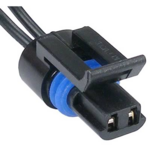
|
3/8" NPT threaded brass body and a 2 pin terminal. | Can be used for air inlet temperature for normally aspirated engine | * Using 2.2K pullup resistor
| |||||||||||||
|
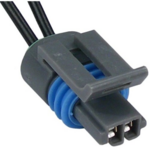
|
3/8" NPT threaded brass body and a 2 pin terminal. |
| ||||||||||||||
AEM | |||||||||||||||||
|
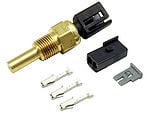
|
|
|
| |||||||||||||
Infrared Sensors | |||||||||||||||||
| Mfg / Part # | Image | Notes | |||||||||||||||
Thermocouple Sensors | |||||||||||||||||
| Mfg / Part # | Image | Notes | |||||||||||||||
Pressure Sensors | |||||||||||||||||
Fluid Pressure | |||||||||||||||||
| These sensors are appropriate for measuring fluid pressures in an engine. Not appropriate for measuring manifold boost or vacuum as these are relative pressure sensors. Use an absolute pressure sensor instead. | |||||||||||||||||
| Mfg / Part # | Image | Pigtail | Mechanical | Notes | Analog Channel Configuration | ||||||||||||
| AEM 30-2131-150 | 
|
3 pin GM connector | 1/8" NPT |
|
| ||||||||||||
| Various | 
|
3 pin GM connector | 1/8" NPT port |
| |||||||||||||
Manifold Pressure (MAP) Sensors | |||||||||||||||||
|

|
|
3 bar MAP sensor |
| |||||||||||||
| Freescale MXP4250AP | 2.5 bar MAP sensor
|
||||||||||||||||
Tire Pressure | |||||||||||||||||
| Mfg / Part # | Image | Notes | |||||||||||||||
| Schrader |
| ||||||||||||||||
Pulse/Speed/RPM Sensors | |||||||||||||||||
RPM | |||||||||||||||||
| Mfg / Part # | Image | Notes | |||||||||||||||
| Autosport Labs CoilX | 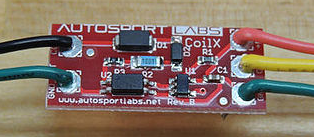
|
The CoilX sensor module is designed to safely interface the noisy, high voltage RPM signal at the ignition coil pack primary into a clean signal that RaceCapture/Pro can process. | |||||||||||||||
Wheel Speed / Gear speed | |||||||||||||||||
| Hall effect speed sensors will require an external 1K pull-up resistor, connected to 5v. This can be wired up near the sensor connection for convenience. | |||||||||||||||||
| Mfg / Part # | Image | Notes | Pulse Channel Configuration | ||||||||||||||
| Hamlin 55505 |
|
| |||||||||||||||
| Cherry GS100701 |
| ||||||||||||||||
Distance Sensors | |||||||||||||||||
Ride Height | |||||||||||||||||
| Mfg / Part # | Image | Pigtail | Notes | Analog Channel Configuration | |||||||||||||
| Sharp GP2D12 | 
|
|
Steps to calibrate:
| ||||||||||||||
|

|

|
| ||||||||||||||
| Texense RHS | 
|
| |||||||||||||||
| KA Sensors RHL3 | 
|
| |||||||||||||||
| Various Mfg / String Potentiometer | 
|
String Potentiometers can be used for a variety of purposes: Linear, distance, and rotation (if cable is wrapped around a shaft) | |||||||||||||||
Angle / Rotation Sensors | |||||||||||||||||
Throttle Position (TPS) | |||||||||||||||||
| Mfg / Part # | Image | Pigtail | Mechanical | Notes | Analog Channel Configuration | ||||||||||||
| Ford / SMP TH45 | Screw mounted, keyed input for throttle shaft |
Common Ford style Throttle Position sensor |
To calibrate, note the voltage at 0% throttle and then at 100% throttle. Use these two numbers to create a 2 point analog scaling map.
| ||||||||||||||
Air / Fuel Ratio Sensors | |||||||||||||||||
| Mfg / Part # | Image | Pigtail | Mechanical | Notes | Analog Channel Configuration | ||||||||||||
| Texense LSU 4.9 Sensor | Built-in wiring | Screws into O2 sensor port |
LSU 4.9 sensor |
| |||||||||||||
Wiring Analog Sensors
RaceCapture/Pro Analog Input Specifications
- RaceCapture/Pro has 8 analog inputs; the 8th input is wired internally to measuring battery voltage.
- Analog input range is 0 - 5v
- Input Impedance: 15K ohm
Temperature Sensor
Temperature sensors are passive devices that measure temperature through the use of a thermistor, a resistor that varies resistance with temperature.
We recommend using dedicated, two wire ECU-style sensor similar to the types specified in our recommended sensor list for best results.

Pullup resistor
A pullup resistor is needed to create the necessary voltage divider circuit so RaceCapture/Pro's analog input can measure temperature as a varying voltage. This pullup resistor is connected to the 5v reference on the RaceCapture/Pro terminal block.
High Resistance ECU style sensors
Use a 2.2K ohm pull-up resistor for high resistance ECU style sensors, such as the temperature sensors in the supported list
Low Resistance Gauge type sensors
Low resistance gauge type sensors are not recommended. If you must use one of these types of sensors, a 1/4 watt 220 ohm pull-up resistor can be used for sensors such as VDO 323-095, 325-002 and similar.
Sensor Ground
Two wire ECU style temperature sensors have one sense lead and one ground lead. For best accuracy, connect the ground lead to the same ground point as RaceCapture/Pro.
One wire gauge type sensors have the ground as the body of the sensor. Ensure the engine is properly grounded to the chassis via multiple ground straps.
Active Sensors
Active sensors are powered devices that provide a variable voltage output related to the environment being measured- such as pressure, distance, temperature, speed, force, etc.

Active sensors are particularly easy to wire. Nearly all active sensors for automotive applications specify 5v power and produce an output within 0 to 5v, making them directly compatible with RaceCapture/Pro. Most active sensors have a linear output and therefore are very easy to calibrate.
Steps for connecting an active sensor
- Identify the power, ground and output signal wires. The sensor technical documentation will provide this information.
- Connect the sensor ground to the same location as the ground point for RaceCapture/Pro
- If the sensor is 5v powered, connect it to the 5v voltage reference on RaceCapture/Pro
- Connect the sensor output signal to the desired analog input port of RaceCapture/Pro
Wheel Speed / Hall Effect Sensor
Wheel speed sensors generate a series of pulses as a toothed wheel passes by the face of the sensor. We recommend hall-effect style sensors, and these are provided with 3 connections:
- Power
- Ground
- Signal Output
Note: - We do not recommend using 2 wire Variable Reluctance (VR) type sensors. VR Sensors will require a conditioning circuit before being provided to the inputs of RaceCapture/Pro.
Wiring the Speed Sensor
- Power: Connect the sensor's power to the 5v Vref on RaceCapture/Pro
- Ground: Connect the sensor's ground connection to the ground shared by RaceCapture/Pro
- Sensor Output: Connect the Sensor Output to one of RaceCapture/Pro's timer input channels
Optional pull up resistor
RaceCapture/Pro requires both a voltage and ground pulse provided in the waveform provided by the sensor. Most sensors provide an internal pull-up resistor so an active square wave can be observed on the output. However, some sensors only switch ground and leave the output line in a high impedance state when not active, like opening and closing a mechanical switch. If the sensor does not provide a pull-up resistor the wheel speed signal may have noise and glitches which may be observed as high value glitches in the dashboard and log file data.
If it's determined a pull-up resistor is needed:
- Use 2.2 to 10K pull-up resistor can be added close to RaceCapture/Pro to ensure a clear signal
- You can use the SensorX breakout board to conveniently wire this pull-up resistor
Throttle Position / Variable Resistors (Potentiometers) / Linear sensors
These type of sensors are passive devices comprising some form of a variable resistor. Examples include:
- Throttle Position Sensors
- Linear sensors
- String Potentiometers
- Single and multi-turn Potentiometers
- Fuel Level Sensors
Standard Variable Resistor (Potentiometer)
These are typically found in Throttle Position Sensors (TPS), string potentiometers, and linear sensors.
- Consult the sensor's technical documentation for sensor connections.
- Connect one of the outside legs of the variable resistor to the ground point for RaceCapture/Pro
- Connect the opposite leg of the variable resistor to the 5v Vref of RaceCapture/Pro
- Connect the variable resistor wiper (typically the center lead) to the the desired analog input port of RaceCapture/Pro
During calibration, if the sensor reads backwards, flip the 5v and ground connections.
Fuel Level Sensors
Also a variable resistor, these provide a variable resistance based on the level of the float.
Wiring
Determine if you need a pullup resistor, or if you are tapping into an existing circuit with a gauge.
If you already have a gauge connected
You will not need a pullup resistor - the gauge's internal circuitry already provides one. You will only need to tap into the existing signal feeding the fuel gauge sender. Jump to the calibration process below.
If you have no gauge / you want to only use RaceCapture for your dashboard gauge
If you only have the sender and want to directly integrate with RaceCapture's analog input, follow this procedure.
- Choose a pull-up resistor value based on the the sender's ohm range. If it is less than 1000 ohms, then choose a 1000 (1K) ohm resistor as your pull-up. If the sender range is higher than 1000 ohms, choose a 2.2K resistor.
- Rule of thumb - choose a resistor that is about 2X to 4X the maximum resistance of the sender.
- A 1/2 watt, 1% accuracy resistor is recommended.
- Wire up the sender per the diagram:
- Connect the ground of the fuel level sender to ground (ideally the same ground point used by RaceCapture)
- Connect the output of the sender to one of RaceCapture's analog inputs
- Connect the pullup resistor between +5v reference and the sender's output. This creates the voltage divider circuit which will present RaceCapture with a variable voltage depending on fuel level.
Calibration
With the fuel at different levels, measure and note the voltage present at the RaceCapture analog input for different fuel levels:
- Empty (0%)
- 1/4 (25%)
- 1/2 (50%)
- 3/4 (75%)
- Full (100%)
Set up the Analog Channel
- Choose an available analog input for your Fuel Level channel, then select the basic Fuel Level preset by selecting Fuel Level in the dropdown list.
- This pre-sets the units (%), logging precision and min / max values. You can edit this by pressing the gear button next to the channel name.
- Set the sample rate to 1Hz.
- Set the mode to Mapped. This will let you create a curved mapping for the sensor voltage.
- Set the smoothing to Maximum - this will help account for variances due to fuel slosh.
- Enter the mapped values noted in the calibration process into the Analog Channel mapping editor under RaceCapture setup. This will provide the calibration curve for your fuel tank.
- Write these settings back to RaceCapture and observe your fuel level readings in units of percentage.
Example BMW E36 fuel level mapping
Example BMW E36 Fuel curve mapping (your sender's calibration will be different)
Sensor Breakout Board
SensorX is a breakout / distribution board that will make it easier to use sensors that require pullup resistors as well as making available multiple ground and 5V Vref connections. The built-in pullup resistors are easily disabled by breaking a designated trace on the board. This board is compact; enough to be bundled inline with your wiring harness and covered in heat shrink tubing when complete.

